
|

|
||
|
Landmarks ~
Churches ~
Pubs ~
Shops ~
Amenities ~
Dwellings ~
Events ~
Schools ~
Sports
Industrial ~ Transport ~ Folklore ~ Families
~ Gallery - Churches and Chapels ~
Catholic ~
Five Ways ~
St. John's Church ~
Lake Street Methodist ~
Robert Street Baptist ~
Ruiton ~
St. Andrews
St. James the Great ~ St. Pauls Church ~ Wesleyan ~ Zoar ~ St. Peters ~ Upper Gornal Chapels
Ruiton Church
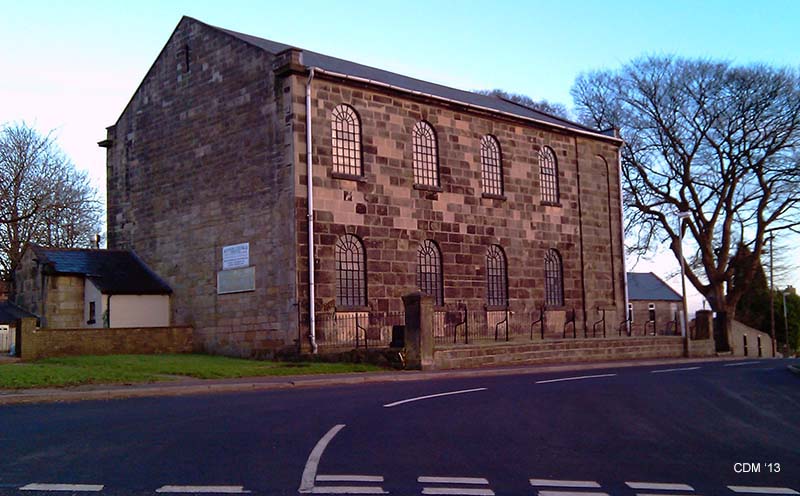 Ruiton Congregational Church, Hermit Street, Ruiton, Upper Gornal.
Ruiton Congregational Church, Hermit Street, Ruiton, Upper Gornal.
Looking towards the rear from the Vale Street/Hermit Street junction, showing the impressive
stone built structure. The picture below is virtually from the same viewpoint showing the cottages that once stood
next to the Church.
Photo 2013  Showing cottages in Hermitage Row with the Church in the background.
Showing cottages in Hermitage Row with the Church in the background.
John Price postcard c1905. CDM Collection
At one time known as Upper Gornal Independent then later the United Reformed Church.
Occupying a prominent position in Hermit Street, Ruiton, this grade II listed building
is the oldest non-conformist church in the district,
with an equally old school attachment.
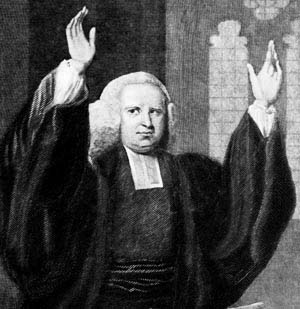 Reverend George Whitefield
Reverend George Whitefield
These are some of the fruits of the ministry of the immortal Whitfield
who, unfurled the banner of the cross in a field preaching in this place, 1750,
and in an edition of his memoirs, published in 1772,
we read that "at a place near Dudley, called Guarnall,
a whole company was awakened by his sermons..."
The Congregational Magazine, October, 1830.
George Whitfield or Whitefield was a much traveled English Anglican cleric and evangelist who visited the Black Country in 1750.
It is thought that as a result of Whitfield's visit, the first chapel was built in 1777.
The first minister was Rev. John Underhill, who died on January 1st,
1792 aged 65, he is buried in a vault in the cemetery.
This earlier building was enlarged in 1804 and around this time,
Reverend Theodosius Theodosius became minister.
After a good start, Theodosius later lost allegiance with the congregation when he and friends pushed towards making Ruiton an Anglican chapel of ease and thus under the authority of the Parish Church. Theodosius lost the intense battle for control and was ejected in 1814, after which time he went on to found St. James in Lower Gornal in 1815. 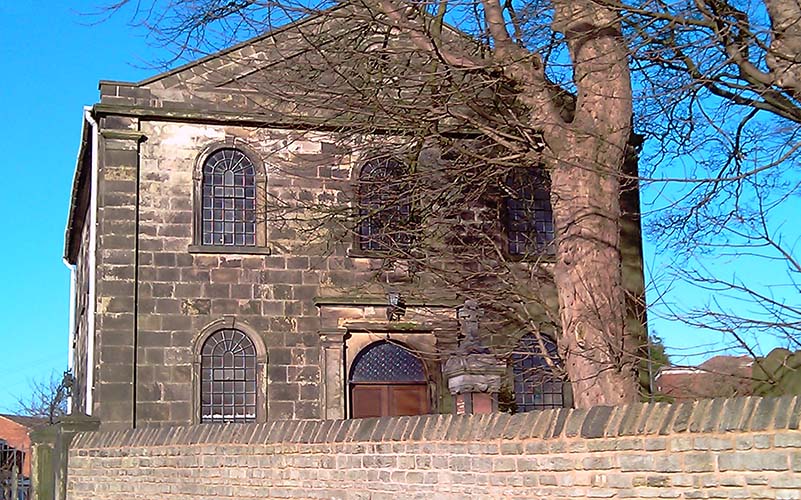 The Church Frontage The Church Frontage
Photo 2015
The old chapel was taken down around 1830 and the present church was built using local stone,
the graveyard surrounds three sides.
"The old buildings were very small, and sadly in a dilapidated state.
An enlargement was projected and commenced; but on subsequent examination, it appeared indispensable
to pull them down and erect new ones.
This has been done with the severest economy."
New Chapel Opened.
"On Tuesday, July 27, [1830] a new and commodious chapel was opened for divine worship at Gornal, in the parish of Sedgley, Staffordshire, for the use of Rev. Thomas Heathcote and congregation of the Independent denomination." "The chapel is 57 feet by 42 feet, with front and side galleries and is capable of accommodating 1000 persons; a considerable portion of the building is appropriated to free sittings for the poor." "Connected to the chapel are school rooms, two stories high, 59 feet by 21 feet, and a small dwelling house for the teacher of an infant school. These were opened in August 1828, and about 300 Sunday School children, together with 100 children on the "Infant School system", are receiving the benefits afforded by those valuable Institutions." "The expense of the whole building, including the chapel and school rooms, amounts to about £1,600." The Congregational Magazine, October, 1830.
The schools built here at Ruiton were some of the earliest in the country as the following newspaper reports in 1834.
On Sunday, the 27th ult. [1834] the anniversary sermons were preached for the Sunday and Infants'
day schools connected with Ruiton Independent Chapel, Gornal.
It is an interesting fact that the Gornal Sunday School was the second in the British Empire; and the Infants' Day School the first in this part of the country; and it is pleasing to know that the schools have produced a salutary influence over a wide circumference of society, and that they are in a very flourishing state.
The Wolverhampton Chronicle, Wednesday, May 7 1834
On the 19th July, 1837 Ruiton Independent Church was registered for solemnizing marriages.
1837: London Gazette.
Ministers in the 19th century were:
Thomas Heathcote John Hill Robert Simpson S.M.Coombes Joseph Wilcox Edward Hughes
Thomas Heathcote, born January 9, 1781, died December 8, 1831.
"Mr. H was greatly blessed in his labours, and lived much in the affections of his people. He found the cause in a low state when he went, [to Gornal] and was the means of considerably increasing it. He was instrumental in building a new and very commodious chapel, which was opened in July 1830; his efforts in collecting for which are thought much to impair his health. Near to the chapel is a neat and substantial building, for the use of infant and Sunday schools - objects that lay near his heart."
Extract taken from the Evangelical Magazine, March 1832.
According to White's Gazetteer of 1851, the Ruiton schools were attended by 60 boys, 40 girls and 80 infants.
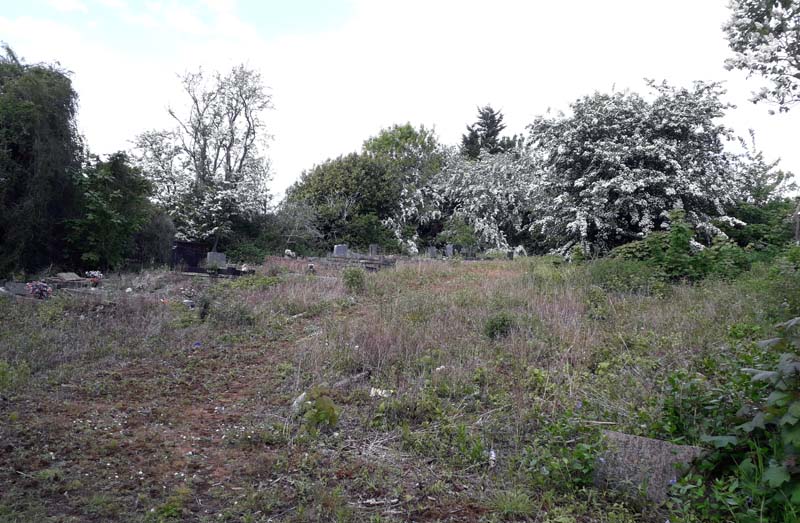 Burial ground in Duke Street presently in an unkempt state.
Burial ground in Duke Street presently in an unkempt state.
Photo 2020
An extension to the existing burial ground was established in nearby Duke Street in 1931 on the old allotment garden site,
which in turn was developed over an old 19th Century quarry.
~
|
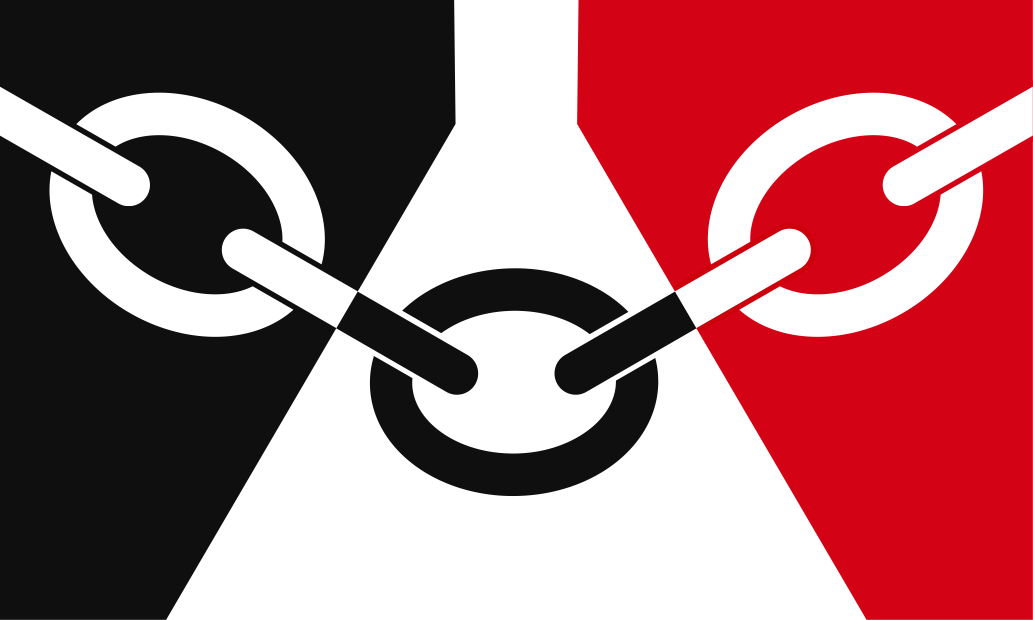
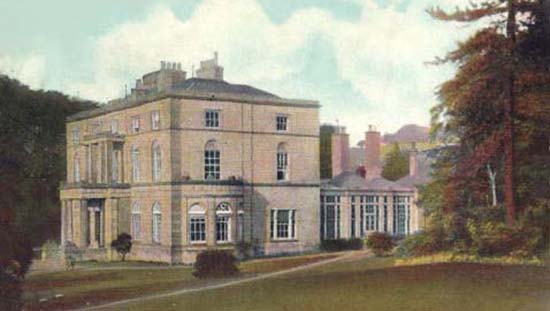

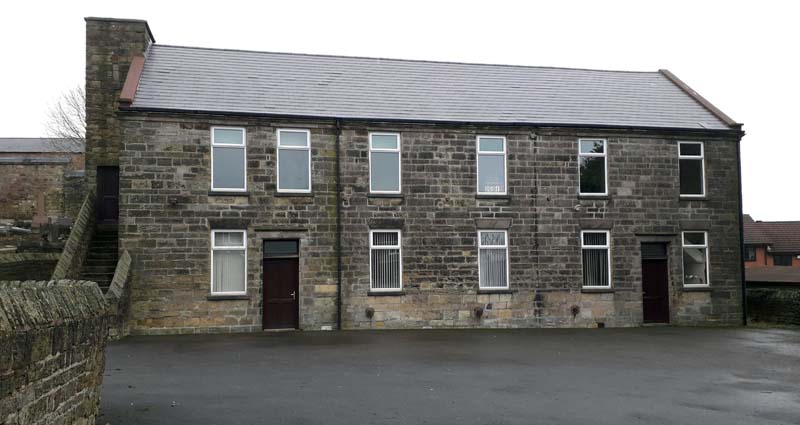 Ruiton Schools
Ruiton Schools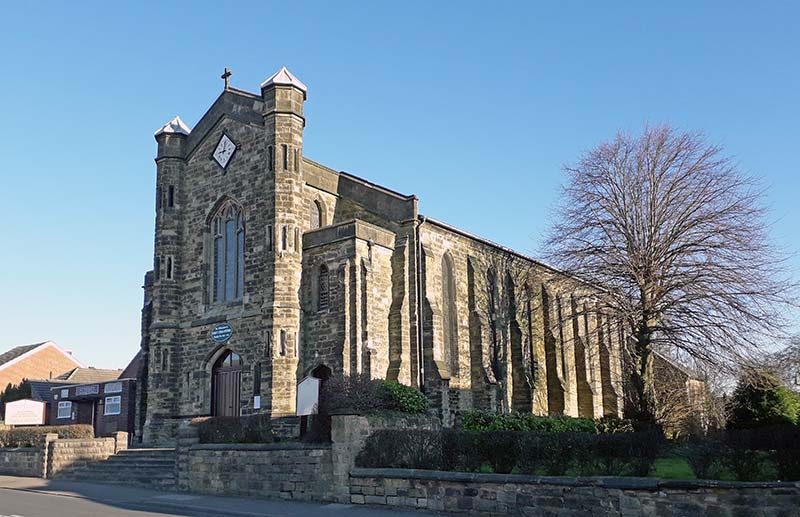 St Peters
St Peters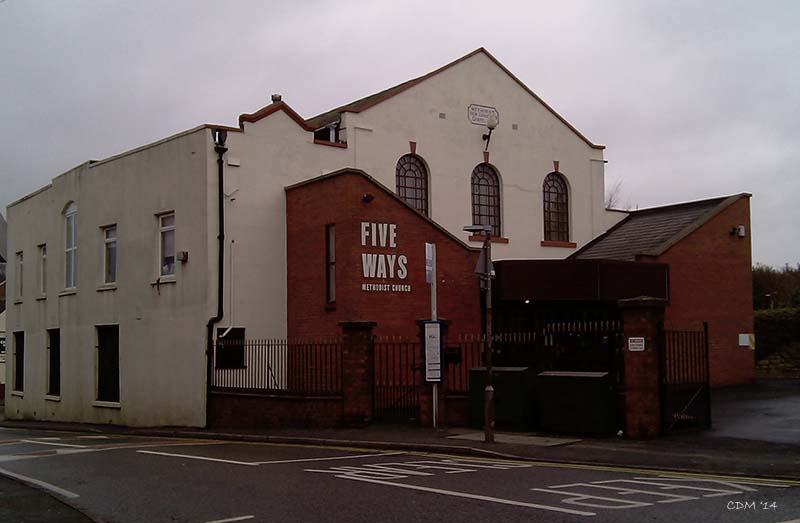 Five Ways
Five Ways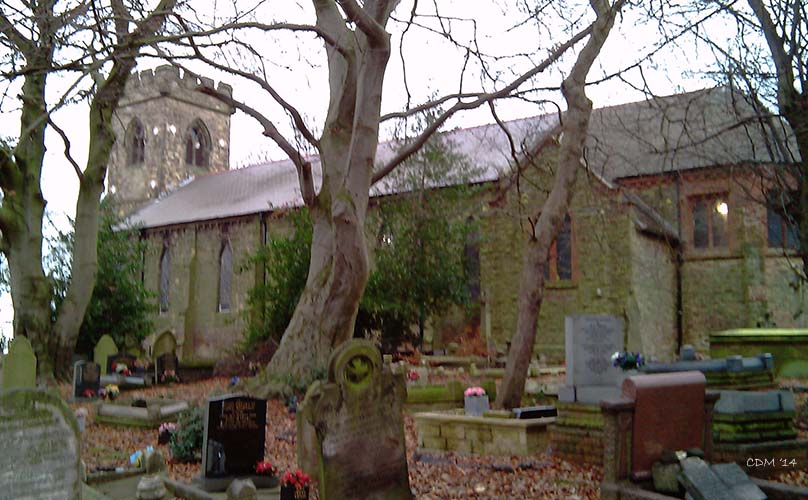 St. James
St. James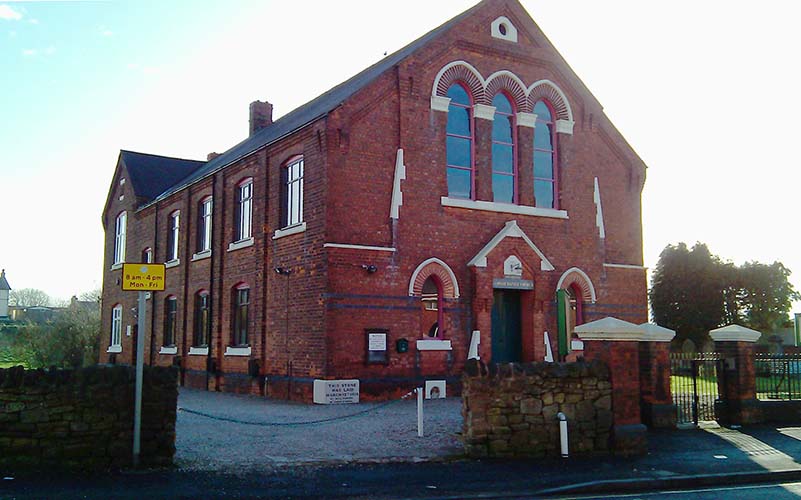 Baptist
Baptist